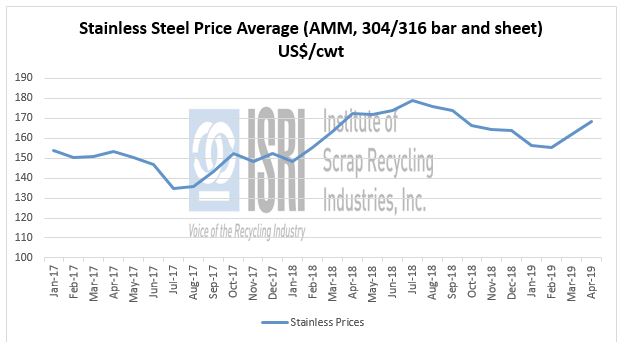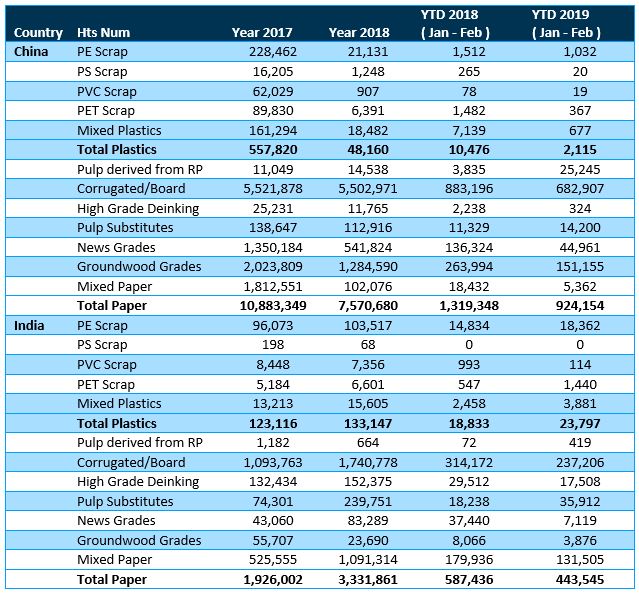Ferrous – Permits for steel product imports to the U.S. rose in April by 0.6 percent, Fastmarkets AMM reports. It appears that much of that increase went to wire rod imports that are up 58.9 percent or 42,447 tons.
Spreads between domestic and imported rebar are at their narrowest margin since 2012. AMM analysts attribute this to the 232 tariffs that have boosted demand for domestically produced rebar with the pricing spread at $1.10 per cwt. Domestic mills may be in the beginning stages of competing with each other as five steel production companies (Nucor, Gerdau, Commercial Metals, Gautier, and Steel Dynamics) have cut their prices for merchant and structural products.
As cancellations came flooding in last week, ferrous scrap buy week looks like it will start the week on the quiet side as negotiations push towards lower prices. Despite global currency markets fleeing toward the Nikkei and Japanese yen, the U.S. dollar’s strength against the Turkish lira continues to rise. Exchange rates kicked of the year at 5.29 lira to the dollar as compared to 5.98 to the dollar as of late last week.
Nonferrous – Stainless steel scrap prices took another hit this month with 300-series grades dropping and chrome grades on unsteady ground. AMM also reported that many dealers feel that nickel markets have been weak which has contributed to the drop in prices. However, LME nickel priceshave firmly established themselves about 25% above 2017 average prices. Light-weighting and other alloy alternatives, along with uncertain raw material input prices, may be contributing to challenging stainless scrap market conditions.

As reported by Reuters last week, the disappointing readings on manufacturing may be starting to take a toll on nonferrous metals: “London Metal Exchange (LME) copper slumped 3 percent on Wednesday and has slid further to a three-month low of $6,150 per tonne, last trading at $6,180.
True, the move took place in something of a liquidity black hole with China and much of Europe on holiday this week, leaving the market prey to automated funds, which have been momentum-trading a rapidly deteriorating technical picture.
But copper’s real problem is growing concern about the state of global manufacturing.
It was no coincidence that Doctor Copper, so called for the metal’s ability to predict the way the broader economy is heading, fell out of bed on the day the U.S. Institute for Supply Management (ISM) released its weaker-than-expected purchasing managers index (PMI).
Nor was it just copper. All the LME base metals have been retreating as differing supply dynamics are overwhelmed by demand uncertainty.
Macro clouds are keeping many of the macro funds out of the base metals sector, contributing to the type of liquidity gap that opened up in the middle of this week.”
Paper and Plastic
As alternative markets have been an important aspect of adapting to China’s import restrictions, here’s a table of U.S. paper and plastic scrap exports to China and India to reference some of the shifts we’ve seen.

For more information, please contact ReMA Research Analyst Bernie Lee.
Back to Main